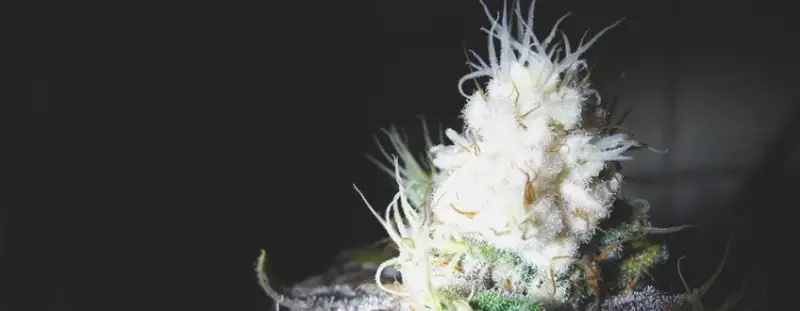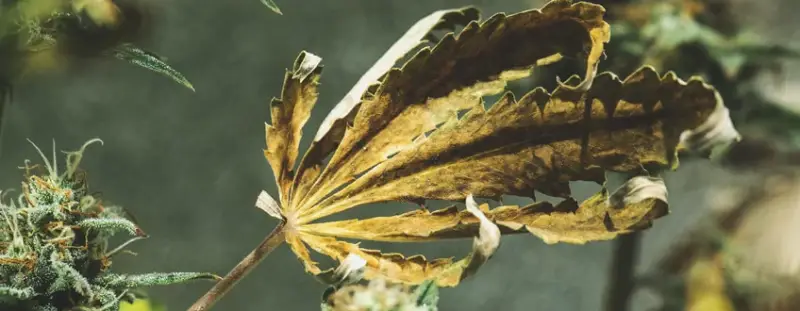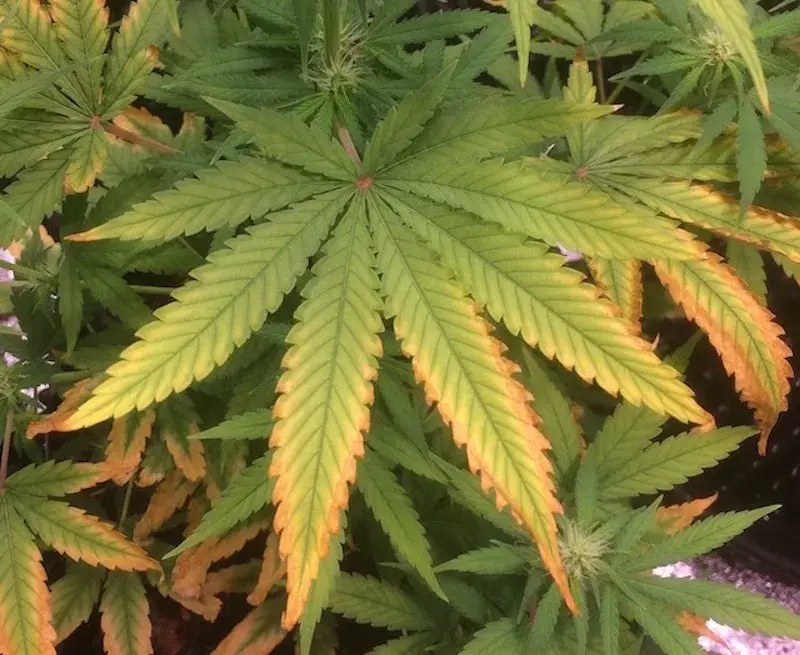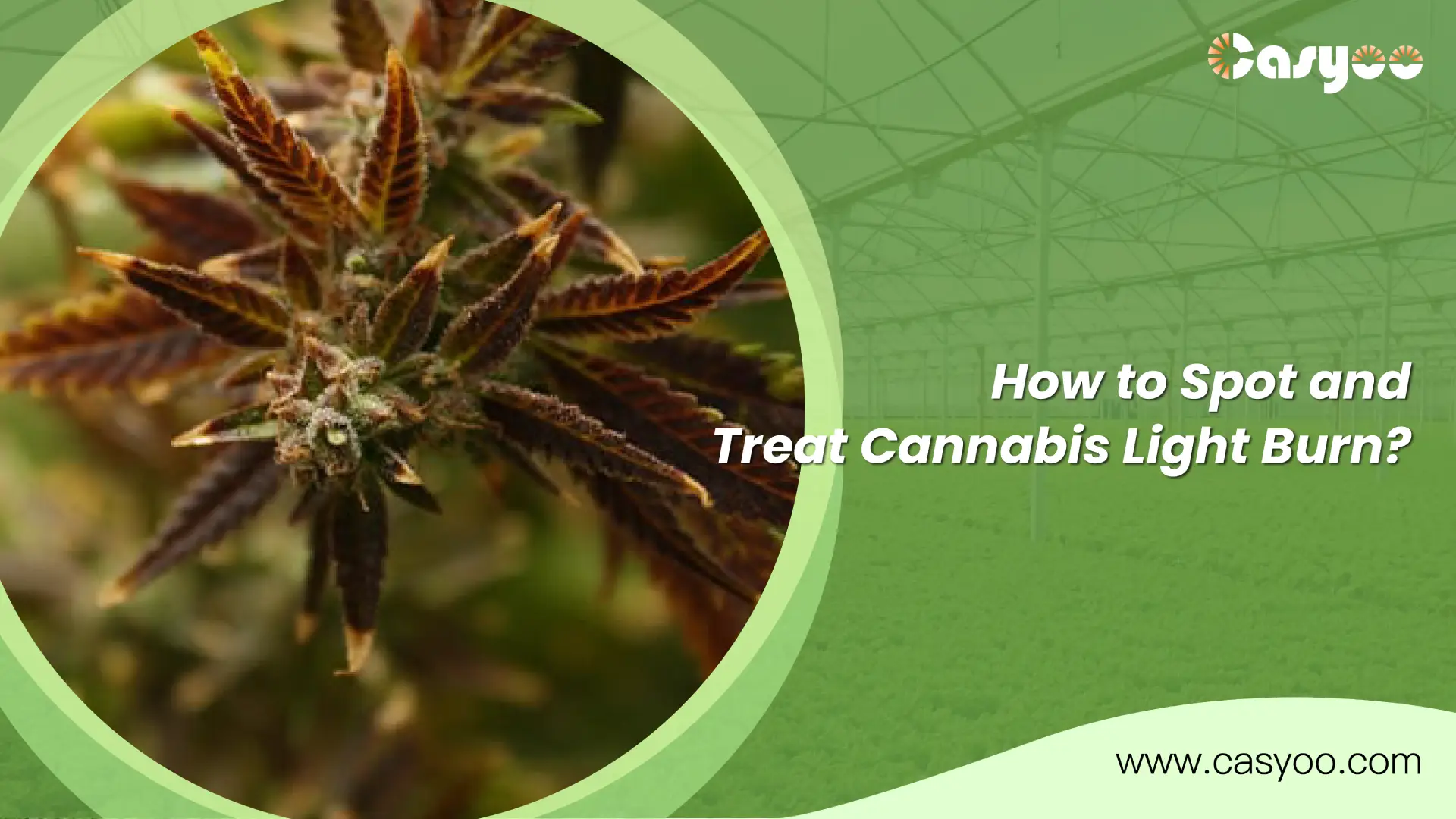Successfully growing cannabis requires a lot of time and energy. Cannabis plants have different requirements at different stages that growers should meet in order to maximize their yields. One important factor that cannabis growers must consider is the amount of light their weed receives. Although light is essential for cannabis growth, it can sometimes do more harm than good if used improperly. Cannabis light burn can cause permanent damage to your weed and affect the quality and harvest. Nonetheless, your plants will recover from light burn as long as you spot it in time and take appropriate measures. Let’s take a look at the signs of light burn and how to fix it.
What is light burn?
If you notice that leaves that are too close to a light source turn white or look bleached, that’s light burn. Crops that are grown outdoors will not get light burns because the sun is too far away from the earth to burn your crops. However, if your crops are grown indoors, then light burn can occur. When artificial grow lights are too close to the crops, the leaves and even the buds begin to look whitish or burnt, which means that the heat is too high for the plants to withstand. Although white buds may look nice, it is a sign of damaged buds. Since the light source is too close to the buds, both the resin and the cannabinoids are destroyed, resulting in a poor aroma.
How to differentiate between light burn and nutrient burn?
In short, light burn is caused by too much light, but nutrient burn, on the other hand, is caused by too many nutrients in the soil.
Nutrient burn is also known as fertilizer burn and is caused by an excess of nutrients in the fertilizer. Since there are too many nutrients in the soil, the plant does not get enough water. Similar to light burn, nutrient burn also results in a change in leaf color; typically, the leaves turn yellow or brown. The tips of the leaves initially have a yellowish hue, which eventually changes to a rusty brown. If this continues, the leaves begin to bend and become brittle.
In the early stages, the only symptom is the changing color of the leaves. Therefore, it is difficult to distinguish between light burn and nutrient burn. The simplest method to distinguish between nutrient burn and light burn is to examine the area of the plant where the color has changed.
Nutrient burn usually appears as burnt leaf tips. These usually turn brown and crisp. The cannabis root system and the leaves will eventually sustain some degree of damage from nutrient burn, which could have an impact on the final yield and quality. Cannabis light burn is a bleaching process, there is no “browning”.
What are the Signs of Cannabis Light Burn?
Bleached Buds

A sure symptom of light burn is bud bleaching. This phenomenon occurs when cannabis is too close to grow lights. You may have seen pictures of pure white cannabis buds online. This may look like an intentional development of rare genetics, but the truth is that it is just bleaching.
While white buds look interesting, this renders them useless. Heat weakens the resin’s cannabinoids, which makes the buds less effective. The smell of these buds will also deteriorate.
Yellow Leaves

Another indication that your plant has light burn is yellow leaves. However, a lack of nitrogen might also result in yellow leaves. The difference is that this type of yellow leaves caused by nutrient deficiency starts at the base of the plant, showing obvious wilting, and will fall off or be extremely easy to remove. Conversely, light-burn-induced chlorosis will develop near the top of the plant, where these leaves will be more robust and difficult to remove.
Slowed Growth
Light burn damages the structures that photosynthesize, resulting in slower growth. The burned leaves begin to lose water, shrivel, and turn yellow. Due to the lack of water, structure, and chlorophyll, the affected leaves cannot photosynthesize. In the early stages of development, when the plant has few leaves, this can stunt growth and affect plant health.
Leaves Pointing Up
This symptom is a little harder to notice, or your plant may not have it. The leaves of the plant bend upward, indicating light burn.
Can Cannabis Plants Recover from Light Burn?
If your plant has already sustained light burn damage, you can only stop more damage from occurring; the leaves, stems, and buds that have already been harmed will not heal. In addition to repositioning the lights or replacing them with better ones to fit your needs, you can train your plants to avoid growing too high or too close to the grow lights by using strategies like LST and HST.
How to treat Light Burn?

Prevention is far better than cure. Therefore, rather than attempting to treat mild burns, you must attempt to prevent them. Reducing the light intensity and extending the distance between the light fixture and the plant are standard ways to prevent light burns, which are caused by excessive light. For light burns, there are two standard remedies that can be applied.
Adjust the light fixture
The best solution is to hang the light at a higher height. This is possible if you have enough space and can do it.
- Pay attention to the type of light you buy:CFLs will not damage plants even when hung 10 inches from the plant, the same applies to fluorescent or T5 lights as they are not as powerful and do not emit a lot of heat. However, some HIDs 25 cm away from the plant can cause light burns.
- Determine the wattage of the lighting you use:For instance, a 100W LED light might not be too dangerous, but placing a 1000W LED light too close to a plant can have disastrous results. Even at a low wattage, HID lights are very intense, and they emit too much heat, which is unbearable for the plant. Still, keep in mind that you can’t hang the light too far away. The plants won’t get enough light to grow healthily if they are distant from the light.
- Refer to the instructions provided by the manufacturer:If you don’t know the hanging height, refer to the instructions provided by the manufacturer. Grow light manufacturers provide precise instructions on how to hang lights for the seedling, vegetative growth, and blooming stages of cannabis cultivation. These will vary based on light type, wattage, fixture efficiency, etc.
It is important to add that experienced growers can adjust the height and intensity based on their own experience and judgment. Different strains may react differently to the same environment, adjust the hanging height/intensity based on your own experience to get the best results. If you notice that they are struggling, it is a sign that you must move the lights away. However, it’s time to bring the lights closer if you see that they are getting limp and extending too much. Now, if all else fails and the plants are not recovering, you can remove some of the lights. Remember that about 100w of light per square meter is more than enough for the plants.
Low-stress training
Light burn can be treated with low-stress exercise, however it is generally not advised. For example, low-stress training is not necessary if you have adequate room to place the fixture farther away. This is only useful if you lack the necessary space and your grow room’s and tent’s height are insufficient.
In this method, the distance between the light and the plant is automatically reduced because you are bending the stems downward. However, be aware that the stems will do their best to stand up again and face the light, so you will need to use a sturdy cable tire or wire to hold them in place. Make sure you don’t hurt the plants when using this method. LST is great for autoflowers, but only use it during the vegetative stage. LST is always a technique that stresses the plant, so you don’t want to do anything stressful to the plant while it is flowering.
Conclusion
Remember that cannabis light burn is not a disease like mildew or Tobacoo mosaic virus, light burn is a symptom that occurs when your fixture has too much light or when the colas are growing too much and are exposed to the light. So before you start growing, make sure you have enough space to adjust the height of your fixture. If you don’t have enough space, you can get around it with the LST technique, but as always, prevention is better than cure.




